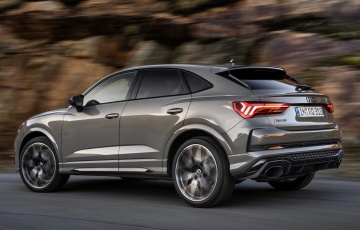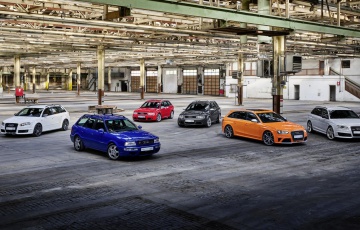Top Gear's guide to the Audi 90 Quattro IMSA GTO
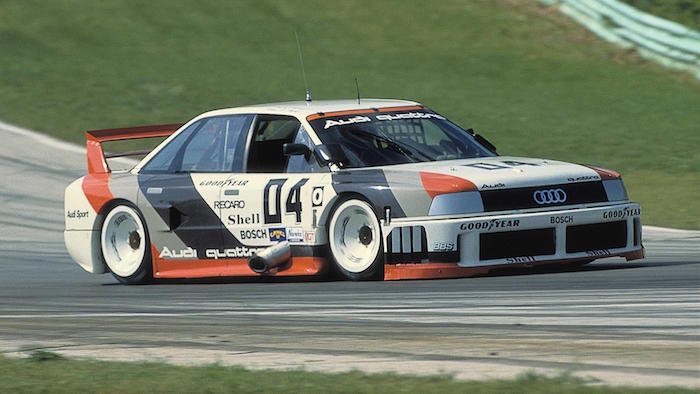
Trans-Am. To the car-addled youth of beige 1970s suburban Britain, it was the vehicle Burt Reynolds and his moustache used to outwit doughy, lobotomised cops. It was a Pontiac, with a golden eagle on the bonnet, and seemingly capable of performing powerslides as long and wide as Texas itself.
America’s grip on popular culture back then was so vice-like that the Trans-Am was surely the best car in the world. Many years later, you would discover that it was in fact one of the worst.
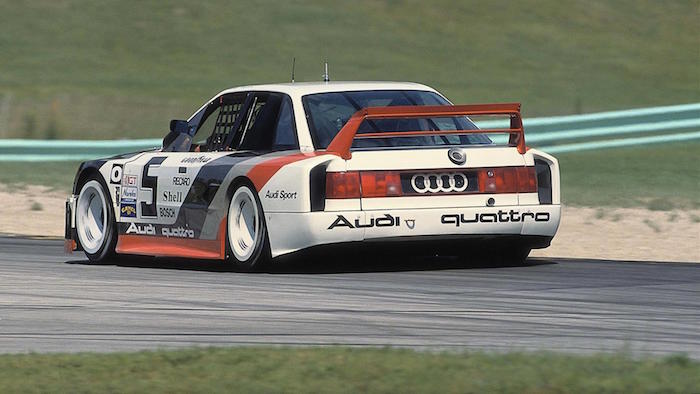
But the power of the race series that inspired its name will never be undone. Founded in 1966, two different classes of modified road cars were the original combatants; the first race was held at Sebring, and was won by Jochen Rindt in an Alfa Romeo GTA (a combo that’s about as far from Burt Reynolds and a Pontiac as you can imagine).
By 1970, it was pretty much the playground for America’s ‘pony cars’, with stellar names like Mark Donohue, Sam Posey, Dan Gurney and Roger Penske all involved. Over the years, Trans-Am morphed into a silhouette formula, and by 1988 an unlikely championship contender had arrived in the shape of the Audi 200.
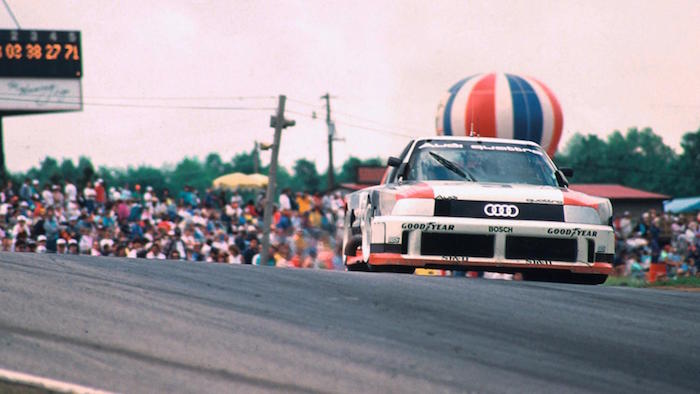
Audi enlisted Bob Tullius’s Group 44 set-up to manage the squad – Tullius had raced British Leyland cars including the E-type and Triumph TR7 a decade before, with startling and some would say improbable success – and Hurley Haywood, Walter Rohrl, and Hans-Joachim Stuck were enlisted to race them. A formidable line-up.
Audi won the championship, taking eight wins out of 13 races, partly down to a 2.1-litre engine that they somehow squeezed 510bhp out of, but much more due to the indomitability of the Quattro powertrain, with a Torsen differential and limited slip diff operating on the front and rear. So much so, in fact, that all-wheel drive was banned by those pesky Yanks at the end of the season.
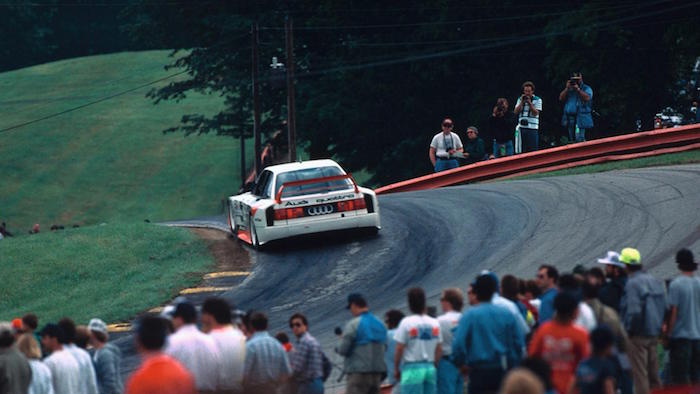
Never mind. Audi switched to the IMSA series instead, and set about creating an all-new tubular steel spaceframe, clothed in a body that resembled the 90 quattro but only if you’d smoked some peyote and/or consumed your body weight in strong liquor. This was, and remains, one of the most fearsome looking racing cars ever, which is why it’s here in TG’s coolest 50.
We also like the fact that it effectively shoe-horned the gizzards of the highly successful world rally car – and Rohrl’s Pike’s Peak ’87 record-setting monster – into a silhouette track car. Remember, back then Audi was still something of a niche concern, for whom the endurance racing and Le Mans-slaying dream was still a decade or more away. (In fact, the brand was battling the consequences of an ‘unintended acceleration’ US market recall scandal at the time.)
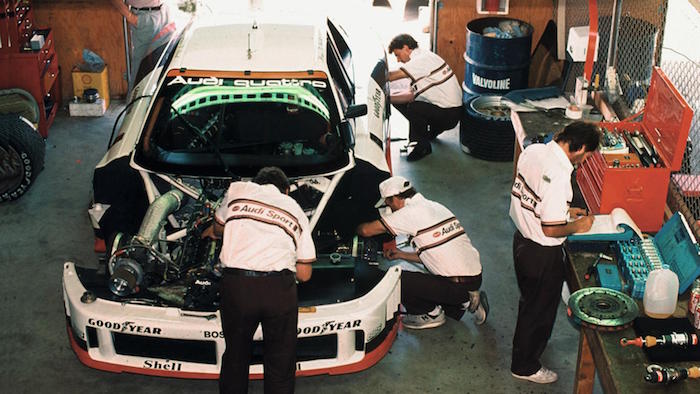
The 20-valve, 2.2-litre five-pot had a massive KKK turbo bolted onto it, and now made somewhere in the region of 720bhp. Most of the engine was sited ahead of the front axle. The exhaust exited, in gigantically unsubtle fashion, through what would have been the passenger door on the road car; the only thing carried over from the real world 90 was its roof. Various carbon composites were used in the body, and a lot of wind tunnel effort was expended on the front air dam and enormous rear wing. The 90’s suspension used double wishbones and coil springs, with ventilated discs all-round.
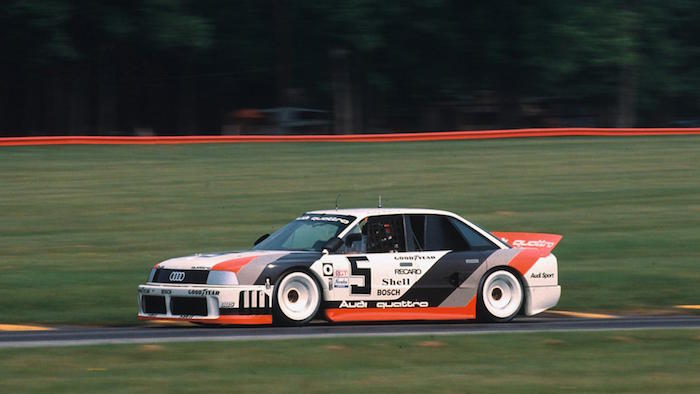
Rather than relying on Tullius and Group 44, Audi of America ran the IMSA campaign itself. With the Trans-Am champ Hurley Haywood retained, alongside the mighty Hans-Joachim Stuck (whose 6ft 4in height was better suited to endurance racing than Formula One), the team won seven of the series’ 13 races, but was beaten to the punch by the Mercury Cougars being run by Roush Racing.
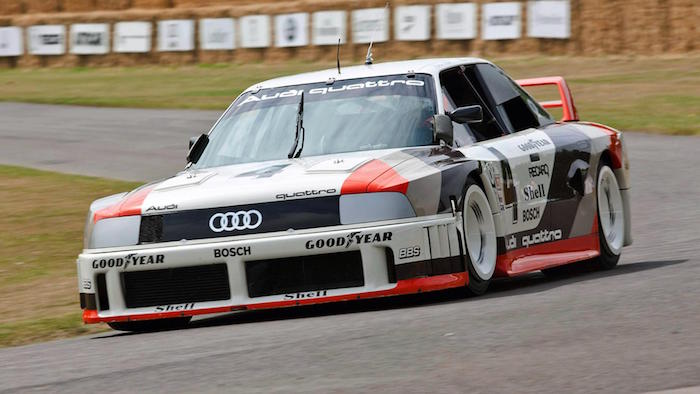
Electing to miss both that year’s Daytona and Sebring races, because the car was still under development, the mad Audi debuted in Miami, where gearbox problems distracted from its pace. It was a glitch that was swiftly overcome – Stuck and Haywood scored a one-two at Summit Point, in West Virginia, in May 1989, Stuck won again in Mid-Ohio, then again in Topeka, at Sears Point, at Watkins Glen, Lime Rock, and at Laguna Seca. He finished third overall, while Audi was runner-up in the constructors’ championship. If they’d raced at Daytona and Sebring, they’d surely have won both championships.
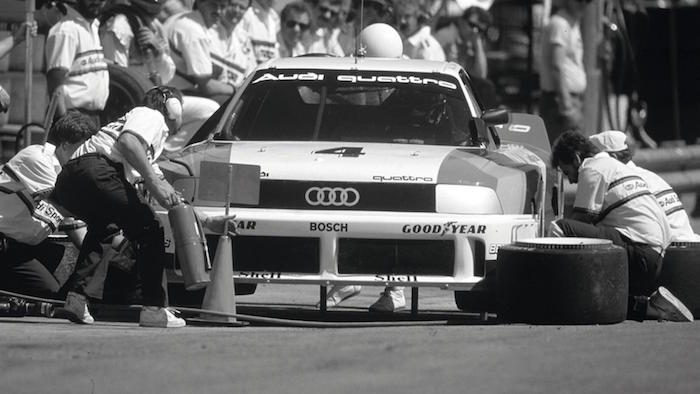
Despite this strong showing, Audi’s German bosses preferred to focus the company’s motorsport’s efforts on the domestic DTM series, pulling the plug on the 90 quattro’s US exploits after just one glorious season. This career brevity is another reason the 90 quattro lingers long in the memory.
“When we came to the States with this car,” Stuck remembered 20-odd years later, “nobody can believe what we can achieve… small engine, five cylinder, it’s a German saloon car! We could use a later braking point, and practically any line we wanted [on the circuit]. When I cross the finish line, I started yodelling!”
Y’see? Burt never yodelled.
Drivers: Hans-Joachim Stuck, Hurley Haywood, Walter Rohrl
Engine: 2.2-litre, five-cylinder, 710bhp, six-speed manual gearbox
Weight: 1207kg
Stand-out moment: that first win at Summit Point. Yee-ha etc.
STORY Jason Barlow






